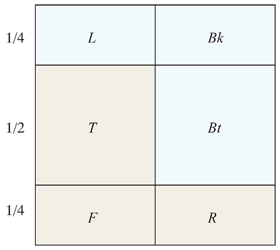Suppose you are given a single unit square, and you are permitted to cut it into $k$ (connected) pieces (where $k=1$ means just the square). Your task is to construct the largest volume convex body in $\mathbb{R}^3$ by pasting the $k$ pieces together as its complete surface; so its surface area is $\le 1$. Denote its volume by $V_\max(k)$. (This is a more general version of my earlier question, Covering a Cube with a SquareCovering a Cube with a Square.)
The best one could hope for is to create a sphere with unit surface area, when the radius satisfies $4 \pi r^2 =1$ and so $r=\frac{1}{2\sqrt{\pi}} \approx 0.28$, and the volume is $V_\max(\infty)= V_\max = \frac{4}{3} \pi r^3 = \frac{1}{6 \sqrt{\pi}} \approx 0.094$.
In response to a question of Joe Malkevitch, with students I computed the optimum for $k=1$,
with no cuts and no overlap,
and found a maximum volume of
$V_\max(1)\approx 0.056$, which is about 60% of the sphere volume.
[p.418 in Geometric Folding Algorithms: Linkages, Origami, Polyhedra]:

The seeming randomness of this shape discouraged my further pursuit.
The case $k=2$ resembles the famous tea-bag problem, but here I am restricting attention to convex bodies.
As $k \to \infty$, one should be able to approach $V_\max$ by, for example, cutting the square into many nearly equilateral triangles and constructing a geodesic dome.
I am wondering if anyone has heard of this problem in any guise before? And in any case, can anyone see any clear hypothesis, for any particular $k$? Presumably one could establish that $V_\max(k+1) > V_\max(k)$, but beyond that, I do not see how to make inroads. Is there an obvious candidate for $k=2$?
Update. Here is my interpretation of Gerhard's suggestion for $k=2$:

